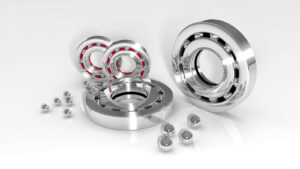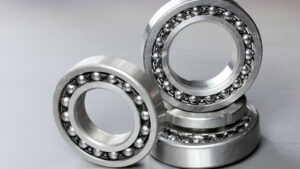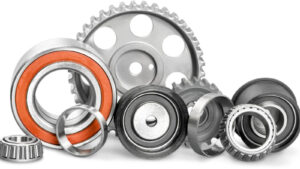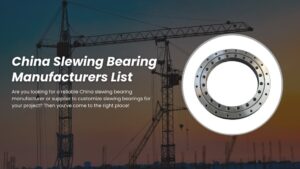Slewing bearings play a vital role in industrial machinery, agricultural machinery, wind energy, construction and other fields. They enable heavy machinery and equipment to rotate smoothly, making them important components in cranes, excavators, wind turbines and more. However, like any mechanical component, slew bearings are susceptible to wear and tear, leading to common problems that require prompt repair. In this article, we’ll explore these common problems and provide suggestions for effective fixes.
Table of Contents
The Importance of Repairing Slewing Bearings
Slewing bearing refurbishment can result in significant cost savings compared to replacing the slewing bearing. Repair or refurbishment is usually only economical for large bore slewing bearings and depends on the extent of wear or damage. Repairs can be done on smaller slewing bearings, but only become economical in larger batch sizes.
1. Gear Wear
Gear wear is one of the most common problems of slewing bearings. Over time, rolling elements and tracks will show signs of wear and tear due to the constant friction and heavy loads they are subjected to. This kind of wear will cause the gap between the rolling elements and the raceway to increase, thus affecting the overall performance of the slewing bearing.
Repair suggestions: In cases of severe wear or irreparable damage, replacement of the slewing bearing is usually the most effective solution. Replacing a new slewing bearing ensures optimal performance and service life.
2. Slewing Bearing Lubrication Problem
Insufficient or improper lubrication can cause serious problems with slewing bearings. Insufficient lubrication can lead to increased friction, overheating, and premature wear. Additionally, contaminated lubricants may introduce abrasive particles, further exacerbating the problem.
Repair suggestions: The Slewing ring should be lubricated at regular intervals, with heavy-duty, grease. Mobile cranes, Luffing cranes, tower cranes, crawler cranes, and any other slow-rotating cranes should be lubricated about every 100 hours of operation.
Grease should therefore be introduced at least every six months, even when you don’t use the crane.
3. Corrosion and Rust
There are many contaminants that can cause problems with a slewing bearing. Dirt, sand, and water are the most common ones that you run into, but chemicals and corrosives can also damage slewing bearing.
These contaminants reduce viscosity which causes corrosion to the bearing surfaces, disrupts the oil film, and causes erosion, leading to the creation of countless abrasive particles.
Repair suggestions: To prevent corrosion and rust, protective coatings and materials can be applied to the surface of slewing bearings. Additionally, rusted areas can be carefully cleaned and treated to prevent further deterioration.
4. Overheating
Overheating is generally the result of excessive operating temperatures and improper lubrication. High temperatures can cause grease to bleed (purge the oil), which reduces the lubricant’s efficiency. In elevated temperature conditions, oxidation can lead to the loss of lubricating oils from the grease, leaving a dry, crusty soap that can seize the slewing bearing. Higher temperatures also reduce the hardness of the metal, causing early failure.
Repair suggestions: Thermal or overload controls, adequate heat paths, and supplemental cooling are among the best options to mitigate overheating.
5. Fatigue Cracks
Often referred to as “spalling,” fatigue failure occurs when there’s a fracture of the running surfaces, which leads to the removal of tiny, detached particles of slewing-bearing material.
Since this type of fatigue is progressive, once it begins, it will continue to spread as the slewing bearing operates. A key indicator of fatigue to keep an eye on is an increase in vibration.
Repair suggestions: In cases of fatigue cracks, welding and crack repair techniques can be employed to restore the slewing bearing’s structural integrity. Welding should be performed by trained professionals to avoid introducing new defects.
Conclusion
Slewing bearings cannot avoid various problems and failures during use. When slewing bearings fail prematurely, it is usually due to avoidable reasons. Therefore, it is crucial to be able to identify the root cause and prevent future failures through preventive measures as well as consequent problems.
Overall, proper maintenance and repair of slewing bearings help ensure the longevity and performance of heavy equipment and machinery. By doing this, you can avoid costly downtime and repairs and keep your equipment running smoothly.
If you are looking for reliable slewing-bearing manufacturers or suppliers, then we are your best choice. Longwei can provide various types of slewing bearings. If you need relevant information or help, please contact us.





